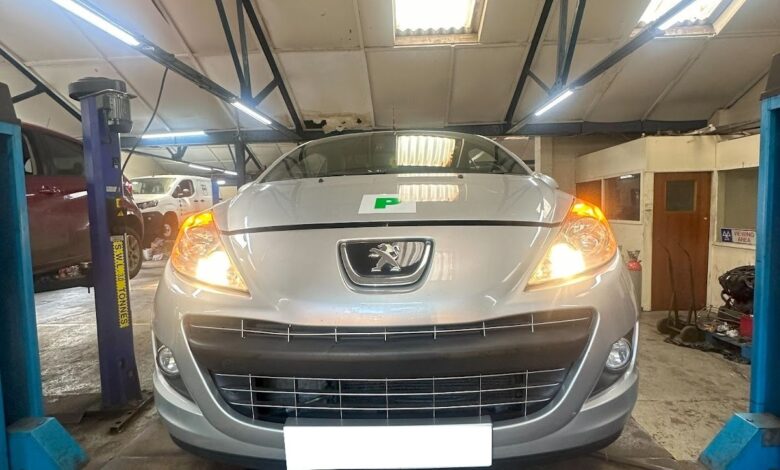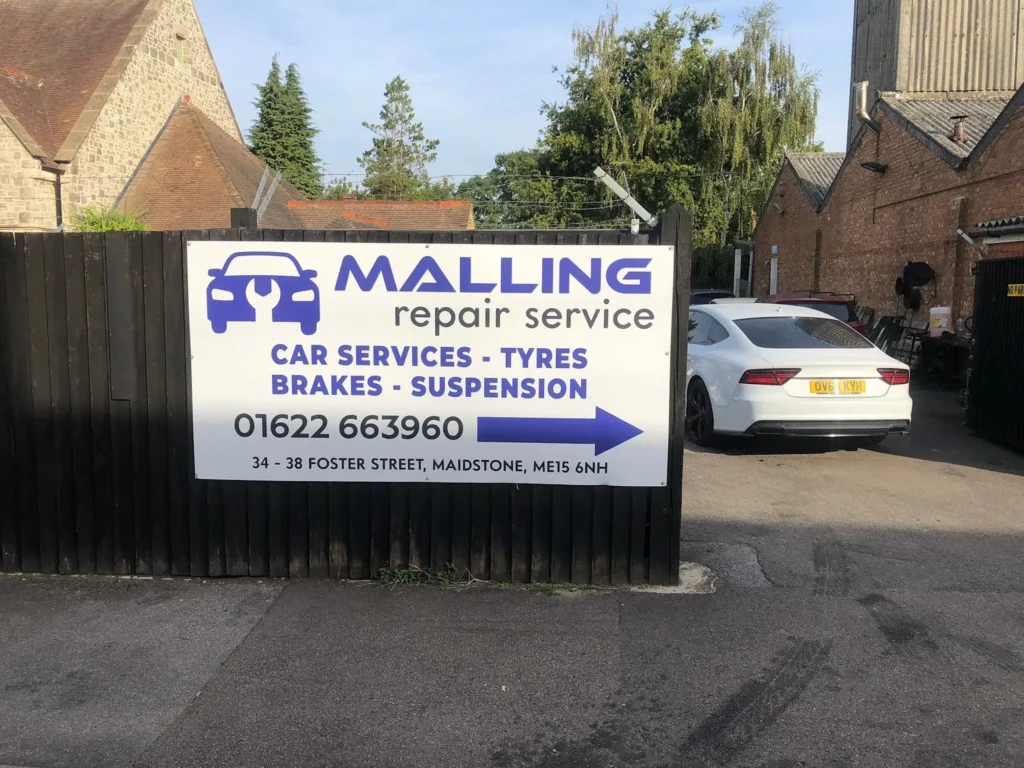Top 7 Common MOT Mistakes and How to Avoid Them

The MOT test is a legal requirement for every car over three years old in the UK. While many drivers see it as a routine task, it is common for cars to fail the test for reasons that are easily avoidable.
Small oversights, lack of preparation, and ignoring warning signs are the main causes. Knowing the most frequent mistakes and how to address them can save you time, money, and stress.
This guide covers the top 7 MOT mistakes, practical ways to avoid them, and additional tips to ensure your car passes smoothly.
Why MOT Mistakes Happen?
Many drivers underestimate the MOT test. They assume that if the car runs fine, it will pass. However, MOT inspections cover safety, roadworthiness, and environmental standards, not just performance. Failing to prepare or checking only the obvious issues is a common cause of MOT failure. Regular maintenance, seasonal checks, and attention to minor details can prevent most of these problems.
1. Ignoring Dashboard Warning Lights
Ignoring warning lights is one of the most common MOT mistakes. Lights like the engine management, ABS, or airbag indicator often signal minor faults that can escalate if left untreated. During the MOT, any illuminated warning light may result in automatic failure.
Before your test, start the car and check that all warning lights turn off once the engine runs. If a light remains, consult a qualified mechanic. Many faults are minor, like a loose sensor or low fluid, but addressing them beforehand avoids failing the MOT and potential roadside breakdowns.
2. Tyre Issues
Tyres are a frequent cause of MOT failure. The law requires a minimum tread depth of 1.6mm across the central three-quarters of the tyre. Worn, uneven, or damaged tyres can cause a failure and affect braking, steering, and fuel efficiency.
Check your tyres using a simple method such as the 20p coin test. Also inspect for cuts, bulges, and uneven wear. Tyre pressure should be maintained according to the manufacturer’s specifications. Both overinflation and underinflation reduce safety and can affect MOT results. Mobile tyre services can provide quick checks and replacements, helping drivers meet the legal requirements before the test.
3. Brakes and Suspension Problems
Faulty brakes and worn suspension components are serious safety concerns and frequent MOT failures. Brake pads, discs, handbrakes, and fluid levels are all checked. Uneven wear or reduced braking efficiency may be identified during the inspection.
Suspension and steering issues are also checked for signs of wear, damage, or loose components. Early signs include unusual noises, vibrations, or uneven tyre wear. Addressing brake and suspension issues before the MOT is crucial to passing. Regular servicing and prompt repairs prevent failures and improve road safety.
4. Lighting and Electrical Faults
Lighting problems, such as broken bulbs or faded lenses, are common MOT fail points. Inspect all external lights, including headlights, indicators, brake lights, reverse lights, and number plate illumination. Make sure lenses are clean and not cracked.
Electrical faults beyond lights, such as horns or dashboard electronics, can also result in failure. Simple pre-checks, or a visit to a local garage, can prevent these issues. Proper lighting and functional electronics are essential for safety and compliance.
5. Windscreen, Mirrors, and Visibility
Visibility issues are taken seriously during the MOT. Chips or cracks in the windscreen, worn wipers, and dirty mirrors or windows can cause a failure. Even minor chips in the driver’s line of sight are enough for rejection.
Check your wipers, refill the washer fluid, and clean all mirrors and glass. If the windscreen has small chips, repair services can often fix them quickly. Clear visibility is critical not just for passing the MOT but for safe driving, especially in wet or low-light conditions.
6. Fluids and Leaks
Low fluid levels or leaks are frequent reasons for MOT failure. This includes engine oil, brake fluid, power steering fluid, coolant, and washer fluid. Inspect your vehicle days before the MOT and top up or repair any leaks.
Running your car with low fluids can lead to mechanical damage, reduce performance, and even affect fuel efficiency. Regular checks ensure your vehicle stays roadworthy and reduces the risk of failing the test.
7. Number Plates, Seatbelts, and Safety Equipment
Small details like dirty or damaged number plates can cause a fail. Number plates must be clearly visible, undamaged, and comply with legal font and colour requirements.
Seatbelts are also checked. Frayed belts, damaged retractors, or faulty locking mechanisms can lead to immediate failure. Airbags, horns, and other safety equipment are tested for functionality. Checking these elements before your MOT is a simple step that can prevent failure.
Additional MOT Considerations
Exhaust and Emissions
Exhaust emissions are checked to ensure your car meets environmental standards. Vehicles producing excessive smoke or noise can fail. Inspect your exhaust for leaks, unusual noise, or visible damage before the test.
Minor Cosmetic Issues
While cosmetic, certain issues like sharp rust, missing bolts, or protruding parts can be flagged. Checking for loose panels or visible corrosion ensures the car is fully compliant.
Documentation and Vehicle History
Having proper documentation, such as MOT history, service records, and receipts is essential. Missing records may delay the test or complicate results. Keeping accurate records helps garages and inspectors evaluate your car efficiently.
Seasonal Preparation
Different seasons affect MOT readiness. Winter may require more frequent checks on lights, tyres, and wipers. Summer may demand fluid checks and tyre pressure adjustments. Adapting your pre-MOT checks according to the season reduces failure risk.
How Malling Repair Services Can Help?
Malling Repair Service is a DVSA-approved garage that helps drivers avoid common MOT mistakes. If you’re looking for a trustworthy mot in Maidstone, their team performs thorough inspections covering brakes, tyres, suspension, fluids, lights, and safety equipment. Minor repairs can often be done on-site, reducing the need for rebookings or delays.
Pre-MOT checks are offered for drivers who want to ensure a smooth test. The team also helps with documentation, vehicle history verification, and advice on seasonal preparation. Malling Repair Service focuses on keeping vehicles roadworthy, safe, and compliant, combining expertise with practical support.

Everyday Tips to Avoid MOT Failure
- Check tyres, lights, and fluids monthly.
- Address dashboard warnings promptly.
- Repair small windscreen chips and keep windows clean.
- Ensure seatbelts, horn, and mirrors function correctly.
- Book your MOT early to allow time for repairs.
- Keep service records and MOT history up to date.
- Consider mobile tyre and repair services for convenience.
These simple habits reduce failure risk, keep your vehicle safe, and prevent unnecessary stress.
Conclusion
MOT failures are rarely caused by complex mechanical faults. Most failures are due to overlooked details and minor maintenance issues. By paying attention to tyres, brakes, lights, fluids, safety equipment, and seasonal considerations, drivers can pass the MOT with confidence.
Regular pre-MOT checks, early booking, and the support of trusted garages like Malling Repair Service make the process smoother. Avoiding common mistakes saves time, money, and stress while keeping your car safe and legal on UK roads.
Being proactive ensures that MOT day is routine, not stressful. For a seamless experience, trust the experts at Malling Repair Services. You can easily find Malling Repair Services on Google Maps to plan your visit and keep your vehicle in optimal condition for everyday driving.



